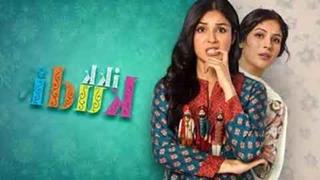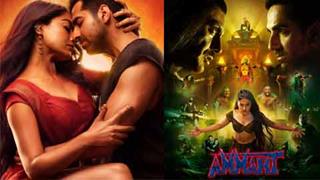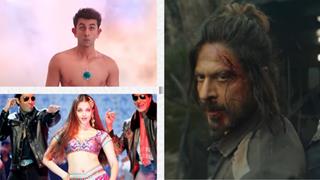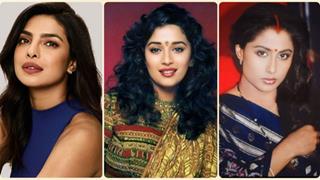"Mumbai kisi ke baap ka nahin hai, " growled the city's joint commissioner of police K.L. Prasad recently.
He was briefing the media on the alphabetic agitation -- M is for Mumbai is for Maharashtra Manoos is for Marathi -- launched by Maharashtra Navnirman Sena chief Raj Thackeray against actress-MP Jaya Bachchan's alleged anti-Marathi remarks, made in Hindi.
Faithful to the script, Thackeray challenged Prasad to remove his police uniform and come on to the street whereupon he would know whose ancestors Mumbai belonged to.
It's not just these two; from the look and sound of it the whole nation seems to be on an intravenous dose of Bollywood bombast as a catchall reference for anything and everything.
Want proof? Television news channels break the news of Prime Minister Manmohan Singh winning the trust vote by playing the song 'Singh is Kinng'. Speaker Somnath Chatterjee exclaims "Chak De India!" in his heavy bhadralok accent to congratulate the Indian cricket team for having won the triangular cricket series against Australia in their lair.
As if stars endorsing brands was not enough, ads fall back on popular 'filmy' situations - from the armless thakur of Sholay 'loving' Mcfood to bandit queen Phoolan Devi glowering at the villager teacher for sporting whites whiter than hers.
Radio jockeys endlessly snarl 'kutte' a la Dharmendra or stutter like King Khan. Would stand-up comedian Raju Shrivastav be able to stand without his Big B act?
Every award function is modelled on star award nites, be it for corporate excellence or cricketing achievements, with film stars often giving away awards. The IPL cricket series wins hands down for serving entertainment with a big Bollywood dollop.
In talent contests on television, children flaunt a Bollywood hip grind or falsetto. And in the dubbed version of the enormously popular Japanese game show, Takeshi's Castle, commentator Javed Jaffri, gives free rein to tapori flow -- singing 'keechad lagaya apne', aping composer-singer Himesh Reshammiya's 'Ashiq banaya apne' when a girl failing to cross a hurdle, falls into a slushy puddle.
The Bollywood effect starts early in life: at a two-year-old nephew's birthday party organised in a pizza shop, 40 children played musical chairs to popular Bollywood numbers like, 'touch me, touch me, touch me, zara zara kiss me, kiss me, kiss me'. It is the latest nursery rhyme.
Not only has Bollywood become synonymous with entertainment; it seems to have become the great commons, taking on attributes of wit, riposte, proverb, collective memory and chatter in almost every sphere of life.
Simultaneously, entertainment is no longer mere content; it has become the language of our times; the mode of communication, the code of communication with big time currency.
There seems to be an unspoken belief that anything that does not come jacketed as entertainment, shall not be comprehended. Or that anything that comes packaged as entertainment is sure to succeed.
Bollywood has always had an influence of its own - triggering fashions and hair styles; inspiring 'jagratas' of bhajans sung to film tunes; weaning an entire Hindi-speaking generation on its music on All India Radio's Vividh Bharati station.
But Hindi cinema occupied a certain slot in public consciousness; there were other enclaves of 'higher' brow popular culture, and high culture.
The past seven or eight years have seen major developments - an explosion of cinema addressing itself to a growing, English-speaking middle class, with English-speaking actors working in Bollywood. Developments that have made Bollywood hep, aspirational, be it a 'Dil Chahta Hai', a 'Rock On', an A.R. Rahman score or terse dialogues.
The impact of these developments has heightened in an age of convergence as cinema and its spin-offs have snaked across television, advertising and live shows to form a giant entertainment bloc.
No more talk of 'infotainment'; in its place is mass entertainment, signalling a reach that the market is so desirous of. No wonder entertainment has become representative of the mantra of growth across segments as well as the conduit to comprehension.
How well this leviathan of a medium knows its power is evident in an ad for a high definition television (HDTV) brand. Two Kathakali performers find their vitality draining, escaping as coloured pixels. The chase ends before a HDTV; the artistes admire their vibrant image, seeming more real than them.
Bhidu, that's life.
Mumbai kisi ke baap ka nahin hai
Wednesday, September 24, 2008 14:04 IST



















